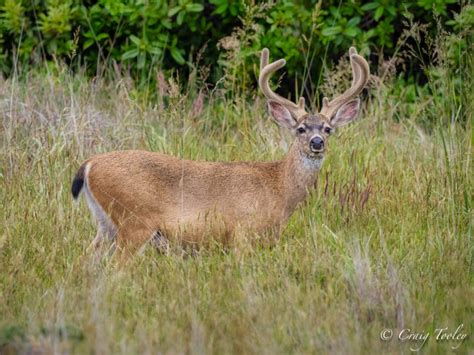Enjoy More Deer Sightings in Your Yard: A Guide to Attracting These Majestic Creatures
Deer sightings in your backyard can be a truly magical experience. Watching these graceful animals in their natural habitat, right from your window, offers a unique connection to nature. But attracting deer isn't about simply throwing out some food; it's about creating a welcoming and safe environment that meets their needs. This comprehensive guide will help you transform your yard into a deer haven, increasing your chances of enjoying more frequent and enchanting visits.
What Attracts Deer to a Yard?
Deer, like any wildlife, are drawn to areas that provide food, water, shelter, and a sense of security. Understanding these key elements is the cornerstone of attracting them to your property.
Food Sources:
Deer are herbivores, and their diet consists primarily of plants. Providing a variety of plants that deer find palatable will significantly increase your chances of attracting them. Some favorites include:
- White clover: A highly nutritious and attractive option.
- Alfalfa: Another excellent source of nutrients.
- Native grasses: Planting native grasses provides a natural and sustainable food source.
- Apples, pears, and other fruits: These offer a tempting seasonal treat. However, be mindful of overfeeding.
- Oak, maple, and other hardwood trees: Deer enjoy browsing on the buds, leaves, and acorns of these trees.
Water Sources:
Access to fresh water is crucial, especially during drier months. Consider adding:
- A bird bath: A shallow bird bath provides a convenient water source.
- A small pond or stream: If feasible, this creates an ideal watering hole.
- A strategically placed water trough: Ensure it's easily accessible and cleaned regularly.
Shelter and Security:
Deer need areas where they can feel safe and protected from predators. This includes:
- Dense shrubs and bushes: These provide cover and a sense of security.
- Tall grasses and wildflowers: These offer concealment and browsing opportunities.
- Avoid open spaces: Deer prefer areas with some cover from potential threats.
- Minimize human disturbance: Avoid loud noises and sudden movements that might scare them away.
How to Make Your Yard More Deer-Friendly
Now that we understand what deer are attracted to, let’s delve into practical steps for transforming your yard:
Planting a Deer-Attracting Garden:
Creating a dedicated garden with deer-friendly plants is a fantastic strategy. Remember to plant in groups for a more impactful visual appeal and to provide ample food sources.
Creating Natural Cover:
Planting a mix of native shrubs and trees will not only provide food but also crucial cover. Consider planting layers of vegetation, with taller plants at the back and shorter ones in the front.
Providing a Water Source:
Regularly fill your chosen water source and clean it to prevent the growth of harmful bacteria. Consider adding a shallow dish of water during hot weather, especially if natural sources are limited.
Maintaining a Safe Environment:
Keep your yard free of potential hazards, such as pesticides and chemicals. These can harm deer and other wildlife. Also, ensure your pets are supervised to prevent any unwanted interactions.
What to Avoid When Trying to Attract Deer
Feeding Deer Directly:
While tempting, avoid feeding deer directly. This can lead to dependency, unhealthy eating habits, and potential conflicts with other wildlife.
Using Artificial Scents or Attractants:
These can be harmful to deer and are often ineffective.
Planting Non-Native Species:
Non-native plants might not be suitable for deer’s dietary needs and could disrupt the local ecosystem.
Addressing Potential Concerns
Are Deer Dangerous?
Generally, deer are not aggressive and will avoid contact with humans. However, it's important to maintain a respectful distance and never approach or feed them. Be mindful of the potential for ticks carrying Lyme disease.
Will Deer Damage My Garden?
Deer can browse on plants, but with careful planning and the right plant choices, you can minimize damage. Consider planting deer-resistant plants alongside those deer favor.
What if Deer Become Too Numerous?
If the deer population in your area becomes excessive, contact your local wildlife management agency for advice on population control.
By implementing these strategies, you can significantly increase your chances of enjoying more frequent deer sightings in your yard. Remember, patience and consistency are key. With a bit of effort, you can create a haven for these majestic animals and experience the wonder of watching them thrive in your own backyard.

